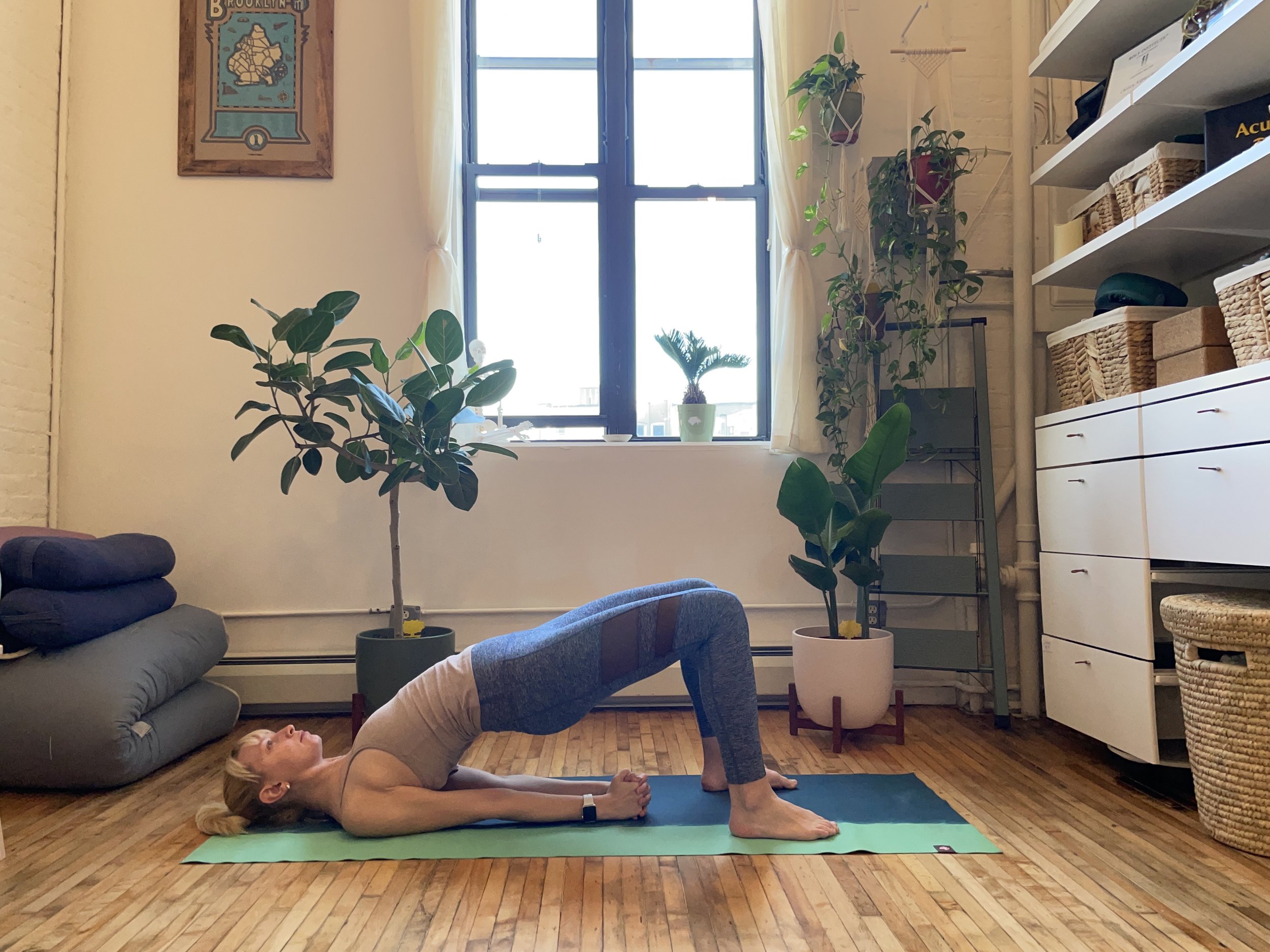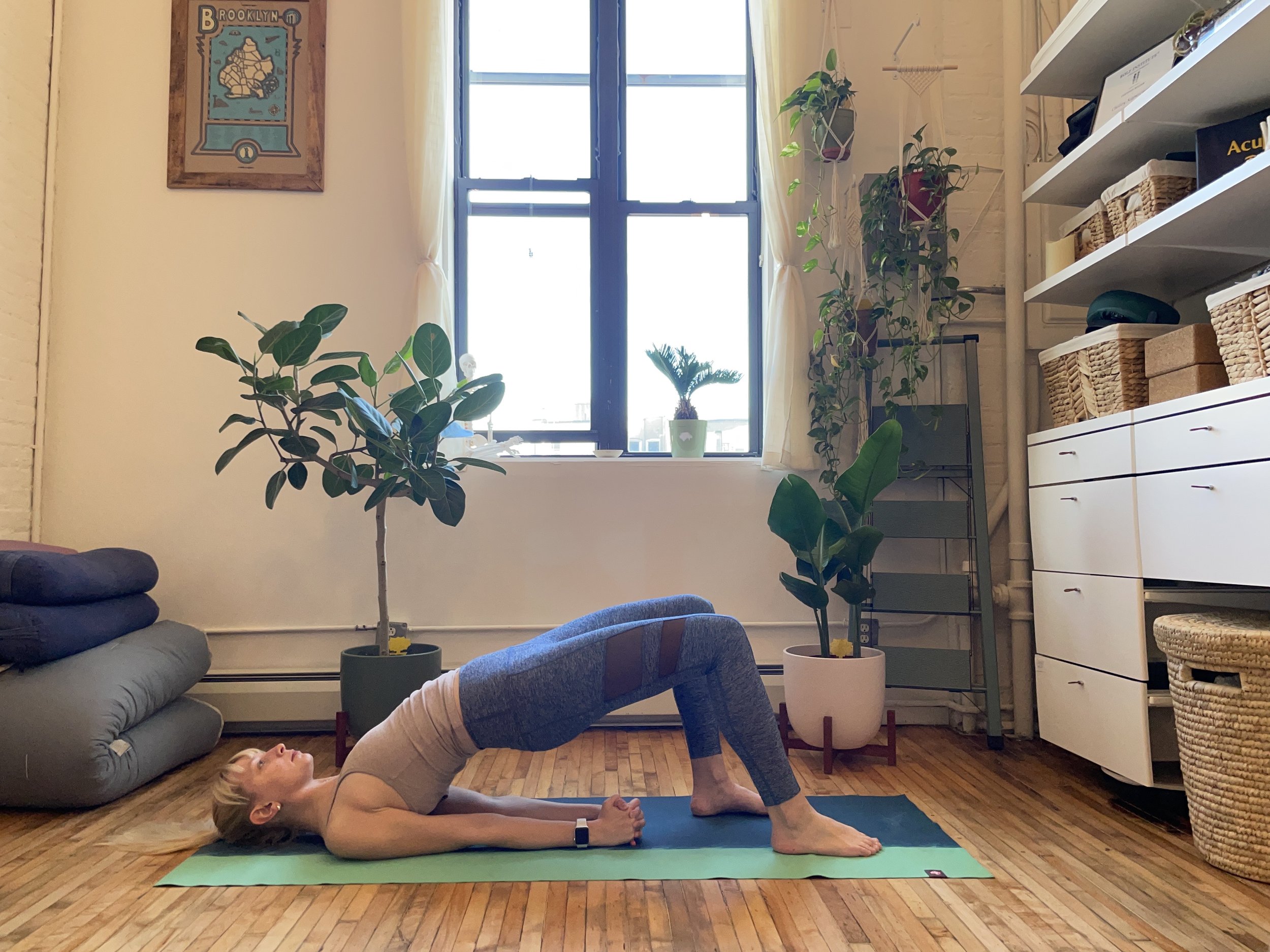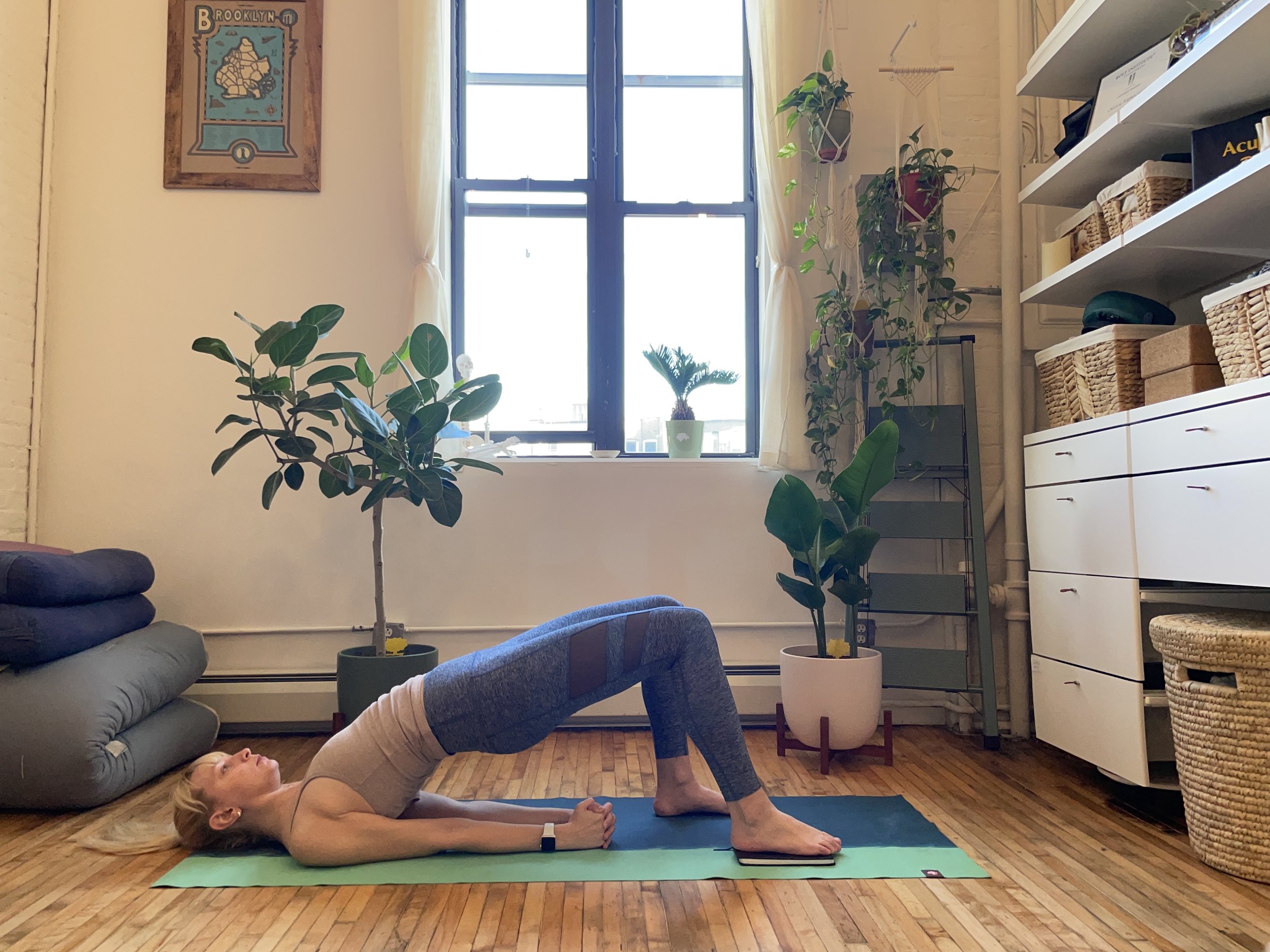Yoga for Scoliosis
Yoga for Scoliosis is the outcome of my own experience with scoliosis. Over the years, scoliosis has revealed the contradictory character of my body. If I have learned anything from this condition, it is that two things can be true.
There are many truths that I have to hold:
On one hand, I can have a manageable condition that does not usually expose itself, and on the other, I can feel remarkably different than everyone else. My body can feel both restricted and extremely loose. I can be grateful that my curvature is mostly invisible in my day-to-day life, and I can stare at the mirror incessantly wondering if anyone will notice that my pants do not fit quite right. I can be thankful we caught the progression of my scoliosis when I was still young, and I can wonder if the brace I wore through much of high school was beneficial at all. I can remind myself that many people have back pain and my back pain is not an inevitable product of my scoliosis, and I can feel deep down that I am never going to be fully convinced that my pain and my spinal curvature are completely unrelated. I can know that no body is perfectly symmetrical, and I can feel so crooked at times that I wonder how nature could have been so careless in constructing my body. I can feel that my body is so fragile if it can bend this easily, and I can know that time has proven that it is so amazingly resilient. I have been told by doctors, practitioners, and teachers that I would never be able to have a professional dance career, and I have been told by others I should not expect any pain from this condition, and I do experience pain, and I have managed to move daily and in big ways for over twenty years.
I have received as many mixed messages regarding my practice. Over the years I have heard it all from “do not back bend” to “do not laterally bend” to “you have no movement limitations” to “only move in ways that feel comfortable.” I have been treated as if I am breakable, and worse yet, my scoliosis has been written off as something that will not have any impact on my practice.
As people with scoliosis, we deserve a practice that works with our natural alignment and gives us the option to move in new ways.
I have spent years playing with ways to adjust my movement practice that acknowledge the differences in my anatomy without leaving me feeling limited. While my back taught me that two things can be true, my practice taught me that many variations are better than one.
Take a standard bridge pose (Setu Bandha Sarvangasana). This pose is typically taught with both feet placed in line with each other. Makes sense in a body where both hip points are level, right? But what about my body? With my right hip usually resting a good deal higher than my left when standing and supine, does this exercise still make sense for me? Totally. There is nothing wrong with me doing this pose with my feet in the same line. But what if I move my right foot forward a little so that my hip points are somewhat level? I can tell you I feel an entirely different sensation here and the work feels much more even from side to side in this variation.



In variation 1, I find that I feel the most sensation in my left hamstrings and right buttocks. Sometimes my right low back can feel compressed in this version.
In variation 2, the work on both sides feels much more consistent. It is a small adjustment, but it feels monumental in my body. The little bit of added length in my right low back makes all the difference. We can take this a step further. I also have a slight lumbar rotation, so generally my pelvis is rotated slightly to the right with my right hip point resting behind my left when standing.
When I add a book underneath my right foot in variation 3, it is easier for me to lift the right hip, and I do not have as much visible rotation. This version generally feels the most spacious for me.
So which variation is the most essential to practice? I would argue they all have value, and if possible, it makes sense to practice all of them. It is informative to be able to feel this pose in the “textbook set-up” within my own structure and to practice variations that demonstrate how other people might feel this pose. Both options are useful, and the ability to choose between many different variations is an important component of healthy and diverse movement practice.
This philosophy serves as the framework for Yoga for Scoliosis, and experimentation drives each session.
My hope is that we can explore your structure honestly and develop a plan together that employs all your potential movement patterns. When you are able to work with choices, you can determine which options feel the most spacious and free in your body. In finding variations that work with your individual structure and challenge you in new ways, we create the possibility of developing strength and mobility and reducing pain and restriction. There is no recipe for working with your body, but without a doubt, you can expect to feel better when you have the confidence to choose movement that feels interesting and constructive to you.

